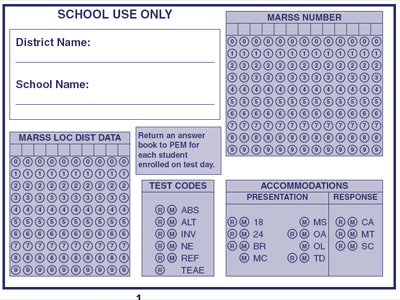
Thanks to the communications department at the Minnesota Department of Education, we’ve got a sample of the Minnesota reading test I referenced in the post earlier today.
This is just one sample question, but try your luck at it . First, read the following editorial from the Star Tribune:
It’s pointless at this late date to lay blame for the sports facilities mess Minnesota now faces. Let’s just say that no other metropolitan area has amassed a more illogical stadium/arena configuration.
Based on national trends, the optimal arrangement is this:
• A cozy outdoor baseball park with 40,000 seats, real grass and an atmosphere that captures the timeless charms of the great summer pastime in an urban setting.
• A 70,000-seat pro football stadium–either domed or retractable–that delivers adequate revenues to the NFL team and doubles as a convention hall and venue for a variety of big-space attractions.
• A separate outdoor, on-campus football stadium (capacity 50,000) for the local university team that wants to maintain a collegiate atmosphere.
• A single downtown sports arena (capacity 18,000) shared by NBA basketball and NHL hockey teams that doubles as a concert/convention hall.
On this test, Minnesota scores zero; it has none of the above. Rather, it has separate and competing hockey and basketball arenas and a single football revenue (the Metrodome) that satisfies neither its football tenants nor the baseball team that has endured “temporary quarters” for 18 seasons.
Unraveling this mess seems impossible given Minnesotans’ fierce change of heart on helping to fund sports venues. Metropolitan Stadium, the Metrodome and Xcel Arena were all built with public money, but the mood now ices up when the Twins or Vikings enter the room. And recently the university has chimed in with a plea for its own oncampus football stadium.
But again, none of this should surprise Minnesotans, given this state’s irrational sports setup. The Metropolitan Sports Facilities Commission, designed to bring order, has been unable to prevent chaos. And so teams and cities are left to freelance. The ever-growing popularity of sports has created space issues for the state of Minnesota.
Minneapolis interests continue to investigate a small-scale, privately funded urban ballpark, possibly in the Warehouse District. A financing plan is expected to be announced. . . . The Twins, meanwhile, have their own citizen-based study underway that may, or may not, merge with the Minneapolis effort by year’s end.
As for football, the Vikings want a joint deal with the university, but the university worries that a big, domed, ultra-commercial NFL stadium would spoil the collegiate atmosphere it wants. Successful college programs in NFL cities (Boston College, Georgia Tech, Cal, Washington) have been careful to retain their own venues.
To complete the picture, Minneapolis now struggles to afford $30 million of improvements so Target Center can compete with its sparkling new, state-funded rival in St. Paul. And the Metrodome slouches toward monster trucks and pro rasslin’ jamborees.
Idealists keep claiming that the public is fed up with subsidizing pro sports; that Americans have finally resolved to say no. But they haven’t. Voters in Phoenix, Houston and Green Bay just approved new playpens. Philadelphia last week decided to move ahead on two new stadiums. Eleven are now under construction, adding to the 49 built in the 1990s–with two-thirds of the cost borne by the public. The boom continues unabated.
Perhaps Minnesota’s stadium mess cannot be fixed, given the toxic political atmosphere. Fatigue has set in. But Minnesotans must also understand that their sports configuration runs opposite to the national market–and that’s why teams and a few die-hard citizens feel compelled to keep pressing for change.
OK, good job, you’ve read down this far, but did you retain what you read. Let’s find out. Answer these questions and ignore the varying formatting: that’s just me flunking the state’s comprehensive html standards.
Question 1:
Question 2:
Question 3:
Question 4:
Question 5:
Question 6:
But wait! There’s more. There’s a seventh question that calls for a written answer, with the student stating at least four causes of the stadium mess that the author mentions.
There are 38 questions in all. The full sample, including a scoring system for the “in your own words” answers can be found here.
By the way Education Commissioner Alice Seagren will be Gary Eichten’s 11 a.m. guest on Tuesday’s Midday on MPR.
(H/T: Randy Wanke, Brianna Chambers)
